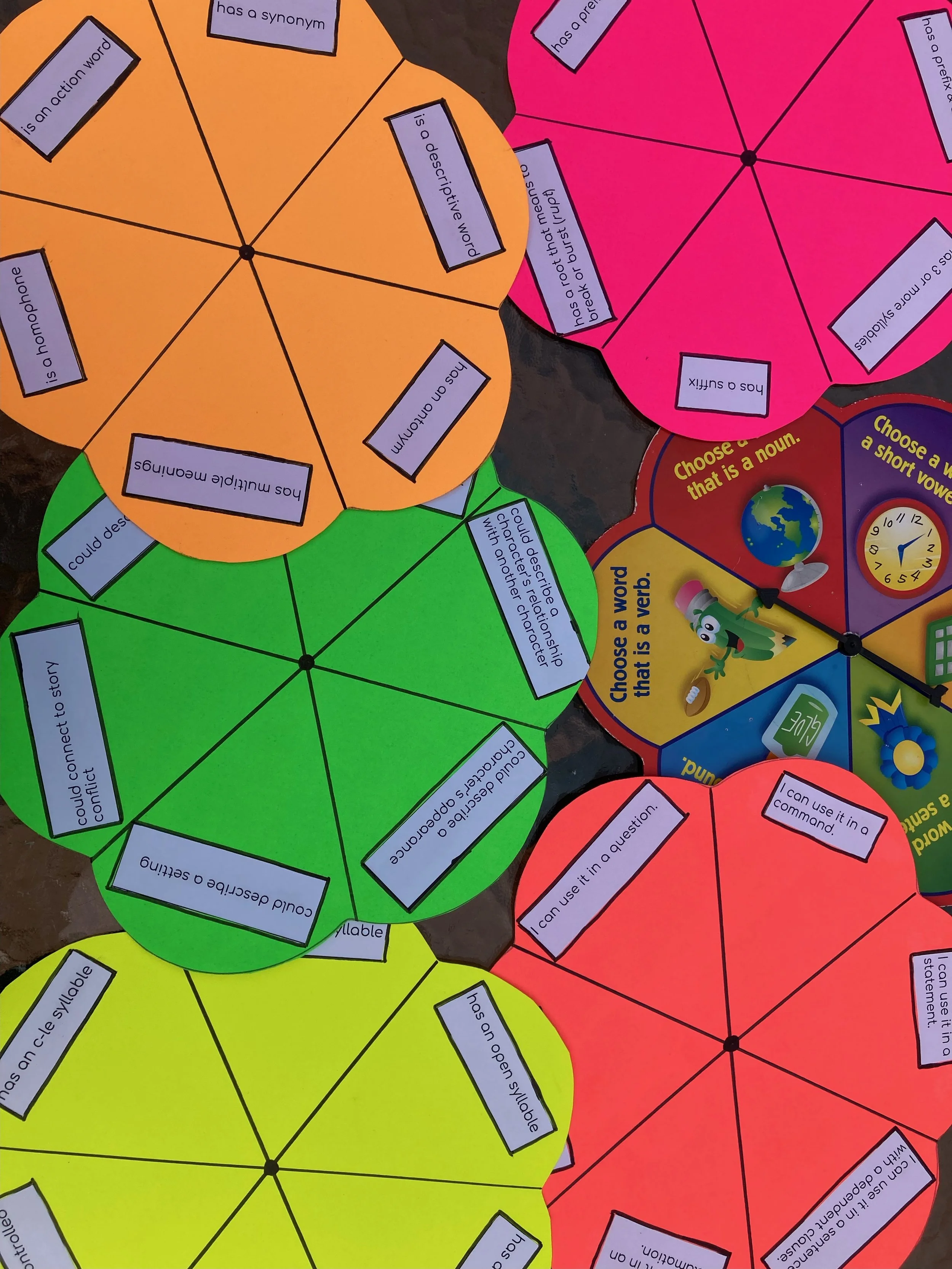Vocabulary Wheels
Since our presentation at Teachers College at Columbia University’s Saturday Reunion, we’ve been receiving requests for more information about the Vocabulary Wheels used in conjunction with a vocabulary wall. Wheels increase interaction with previously taught words. It allows the vocabulary wall to become more than a reference, turning it into an interactive station. You may wish to divide your vocabulary wall into two parts: one with words separated in alphabetical order; the other with a picture of the cover of a recent read aloud with the taught words and student-friendly definitions surrounding it. In my own classroom, I attached the words with velcro dots so the words could easily be rearranged. The wheels ask students to select or move the words for different purposes. Here is the wheel that initiated this work!
Let’s Play Together: How to Use the Vocabulary Wall
Wheels were changed to keep up interest and/or to support current instruction. The wheels might ask the students to:
Bring down 5 words that mean to move (semantic cluster)
Bring down 5 adjectives (parts of speech)
Bring down 5 words that are synonyms
Bring down 5 words that mean almost the same thing and arrange them in order from weakest to strongest (intensity array)
Choose one word and use it in a 7-Up sentence (a sentence with 7 or more words - leads to more complex sentences and avoids simple sentences that do not indicate the child knew the meaning: I am famished.)
Choose two words and use them in one sentence.
Choose two words and tell your partner how they are similar or opposite.
Partner chooses one word. You find either a synonym or an antonym.
Bring down 5 words that have a vowel team.
Bring down 5 words that have two syllables.
Bring down 3 words that have a digraph.
This work is always done in partnerships or quads to support oral languages and function as a check on each other.
Tips for Thought
You can purchase vocabulary wheels at Really Good Stuff, Oriental Trading, even Temu. Some are magnetic and others have suction cups. Children can also make their own wheel with a pencil and large paper clip.
Section your wheels in different ways: traditional pie-shaped, swirls, pinwheel, stars, etc.




